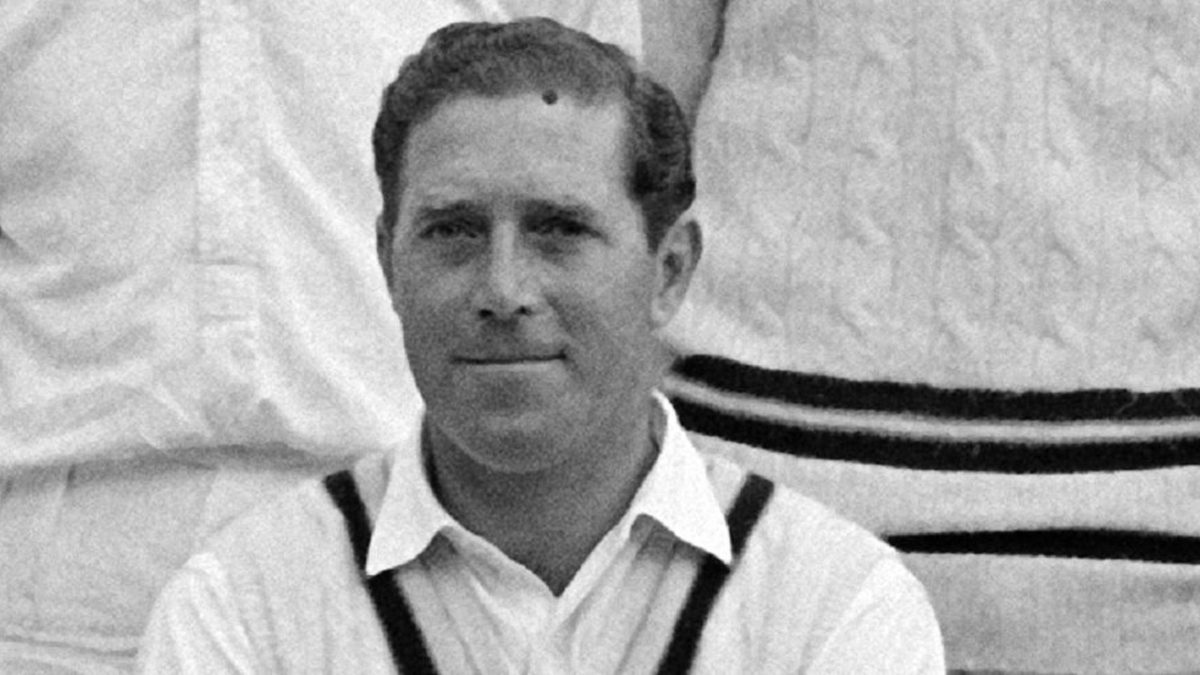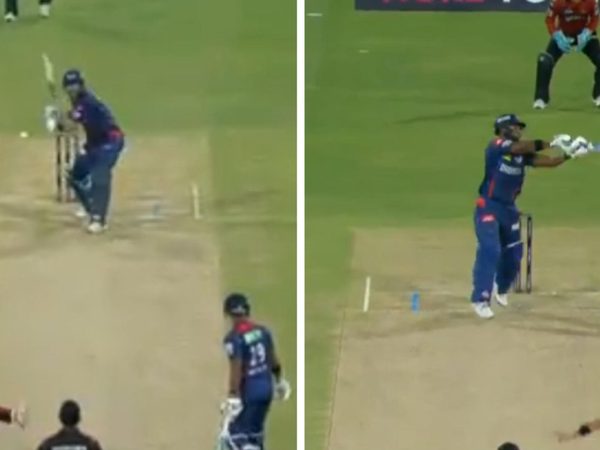
Derek Morgan was the perfect example of a county stalwart during his 19 years at Derbyshire, but was unlucky to never play for England.
Morgan, Derek Clifton, died on November 4, 2017, aged 88
Of all the record 540 matches Derek Morgan played for Derbyshire between 1950 and 1969, none better demonstrated his value than the extraordinary victory over Hampshire at the Ind Coope ground at Burton-on-Trent in August 1958. Only 20 minutes were possible on the first day, on which just one wicket fell, and the teams returned on the second to find a soaking pitch drying under a hot sun: Derbyshire were bowled out for 74 – and Hampshire for 23.
When Morgan walked out to bat in Derbyshire’s second innings, they were 25 for three. Survival was hazardous. A ball from Derek Shackleton reared up and hit him on the forehead. He slapped a plaster on the wound, and went on to make 46 – a remarkable display of guts and technique, when the next-highest score on either side was 19. But Morgan was not finished. After Derbyshire were all out for 107, he took 3-4 as the game’s first bowling change, and Hampshire were skittled for 55. Thirty-nine wickets had fallen in the day.
It was typical Morgan. He rarely earned headlines, and no one would have selected him on artistic grounds, but he became one of Derbyshire’s greatest servants. His 17,842 runs placed him third on their all-time list, while 1,216 wickets put him fifth. He also held 563 catches, the highest by an outfielder for the county. With Donald Carr and Alan Revill, he was a member of the formidable leg trap that snaffled wickets for Cliff Gladwin and Les Jackson, and he was a brilliant ground fielder, his swooping stops and bullet throws responsible for dozens of run-outs: he was selected as England’s twelfth man five times. In another era he might have earned a Test cap. “He was a very fine all-rounder, and unlucky that he played when England had an abundance of them,” said wicketkeeper Bob Taylor.
Serendipity took Morgan to Derby. He was born in north London but completed his national service seven miles from the County Ground in the village of Etwall, where his feats in club cricket brought him to Derbyshire’s attention. As they assembled a team for the new decade, he made his debut against Northamptonshire in May 1950, and stayed in the side for 19 years, as captain for the last five. With Gladwin and Jackson in their pomp, Derbyshire were usually in the top half of the table in the 1950s, and in 1954 finished third. Against Yorkshire that July, he made 66 and took ten wickets as Derbyshire won at Headingley for the first time since 1895. Briefly, it looked as if they might win the title, but they were hampered by rain, and Surrey stormed through the pack.
Consistency was a byword. Morgan passed 1,000 runs eight times, including six times in seven seasons in the 1960s. It was widely thought he had more shots in his armoury but reined in his instincts in the team cause. He made 1,669 runs at 46 in 1962, his most productive summer, while his highest score was 147 against Hampshire at Bournemouth in 1964. He frequently exceeded 50 wickets with his fast-medium outswingers, and his best summer with the ball was 1957, when he took 94 at 23. His best bowling was 7-33 against Glamorgan at Chesterfield in 1965, the first year of his captaincy.
Life became more difficult for Derbyshire as the decade wore on, with the rumbling controversy over Harold Rhodes’s action a regular distraction. In Morgan’s final season in charge they finished second-bottom of the Championship, and there was criticism of his leadership. Now 40, and finding the county grind a strain, he announced his retirement. He was denied a fitting send-off when his team lost to Yorkshire in the Gillette Cup final. “His contribution to Derbyshire cricket has been immense,” said Wisden. He served as club president between 2011 and 2013. “He was one of the nicest people you could ever wish to meet,” said Taylor. “A true gentleman.”








